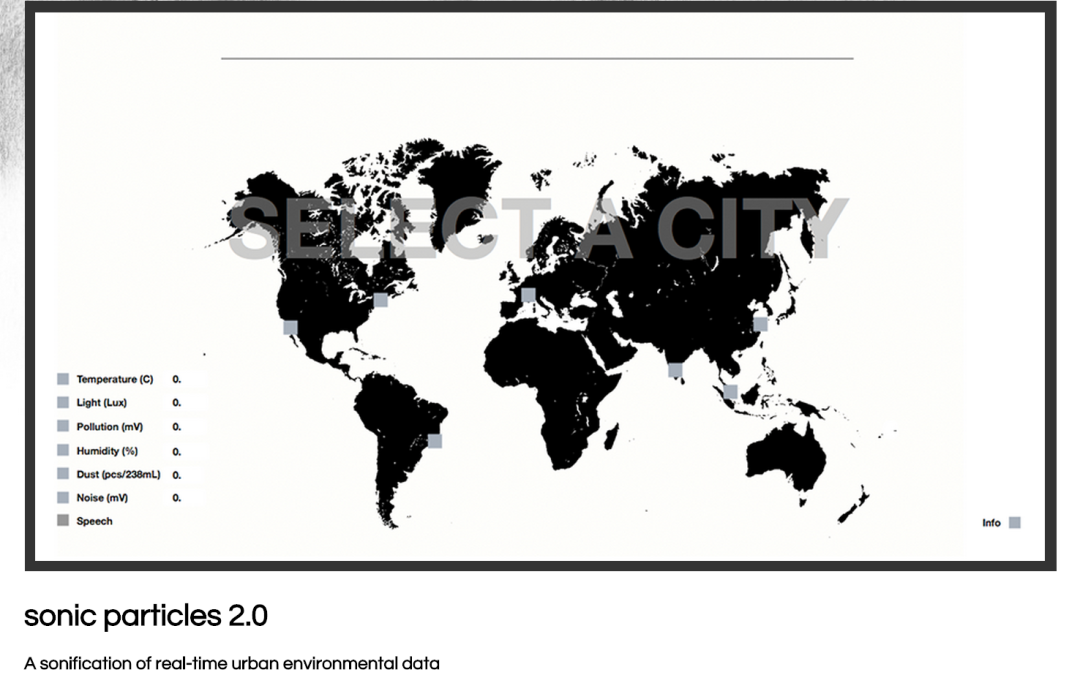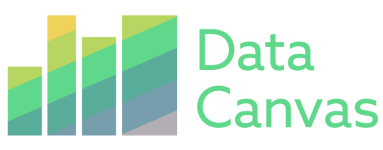
by Emina | Mar 25, 2015 |
Winner of the Lift Grand Prize Sonic Particles 2.0 won the Lift Grand Prize, one of three Grand Prizes. The Lift Grand Prize awards $3,000 to cover transportation costs and entry to all Lift events for one year. Goal of the Lift Grand Prize is to provide an enriching opportunity to learn about the newest trends in innovation and be immersed in a global, interdisciplinary community of doers, makers, and thinkers. Project Description Sonic Particles 2.0 is a real-time sonification of urban environmental data. The sonic composition reflects the continuously evolving data consisting of the temperature, light, pollution, humidity, dust and noise measurements provided by each participating city. Each category of data controls specific sounds and parameters. The resulting composition evolves as the data levels decrease and increase. With the sensitivity of the ear it is possible to differentiate the data levels of each city just by listening to the evolving sounds. Each city has it’s own unique ever-changing composition generated by the urban environment. By selecting a city on the map you will hear the emerging composition. Every category of data will emerge one by one expressing the current temperature, light, pollution, humidity, dust and noise levels in that city. The data is fetched every 5 seconds so that the composition will reflect the most current measurements of each city. Created by Kasper Fangel Skov (Copenhagen, Denmark) Explore Sonic Particles 2.0...

by Emina | Mar 25, 2015 |
Winner of the Gray Area Grand Prize Urban Heartbeat won the Gray Area Grand Prize, one of three Grand Prizes. The Gray Area Grand Prize awards a Creative Code Fellowship at Gray Area, $3,000 cash & $3,000 of Creative Code Classes. Goal of the 10-Week fellowship will be to further develop the project over the Summer and showcase at The Grand Theater. Project Description Urban Heartbeat is an civic art project that explores the temporal identity and pulse of places in cities around the world. The team conducted several experiments based upon different environmental factors, such as pollution, noise, dust, light, and social media. Each experiment explores a different factor using a different medium or visualization technique. The primary goal of Urban Heartbeat is to empower the ability for any citizen to curate their own civic data search, and in turn, return customized search results in the form of information-rich, yet visually simplified format(s), or “pulses”. Our team began by building a series of audiovisual experiments for representing select environmental factors, such as pollution, noise, dust, and light. View Experiments > Over the course of three weeks, we explored, reviewed, and refined our experiments. The result is a web app/search engine that allows users to curate their own searches and compare pulses across 100 places in 7 international cities. Users will be invited to include select environmental factors as they find relevant to their search. Each environmental factor selected will contribute a “layer” onto a resulting urban pulse. As such, pulses will say as much about places as it will about people. Created by Aurelia Friedland, Srivinas Ashok & Steve Pepple (San...

by Emina | Mar 25, 2015 |
Winner of the swissnex Grand Prize It Feels Like won the swissnex Grand Prize, one of three Grand Prizes. The swissnex Grand Prize awards $3,000 to cover the cost of a trip to one of the seven participating cities in Sense Your City. Goal of the swissnex Grand Prize is to connect with an explore the local swissnex community in research, innovation, technology and art. Project Description Where does my weather take me? “It Feels Like” provides users a means of viewing their current weather conditions in an adventurous fashion. It takes current local weather information aggregated from Data Canvas nodes and compares this to a database of typical weather conditions from various international cities and finds the match with most similar weather. Once the match is found, “It Feels Like” presents to the user further visual information of the city and the season which it feels like. This could help recollect feelings from an old vacation spot, serve as a guide to possibly the next destination or introduce people to somewhere completely new. While seasonally, the weather conditions in a given Data Canvas city are roughly fixed, the day to day variations could be significant. “It Feels Like” captures these variations live using Data Canvas sources and is capable of depicting for instance, the summer moments in Boston when it really feels like autumn in London or December in Rio. Overall the goal is to introduce, to the users, a sense of exploring the world while viewing their own local information. Moreover, this allows them to get a feel of what it is like elsewhere, using their...




